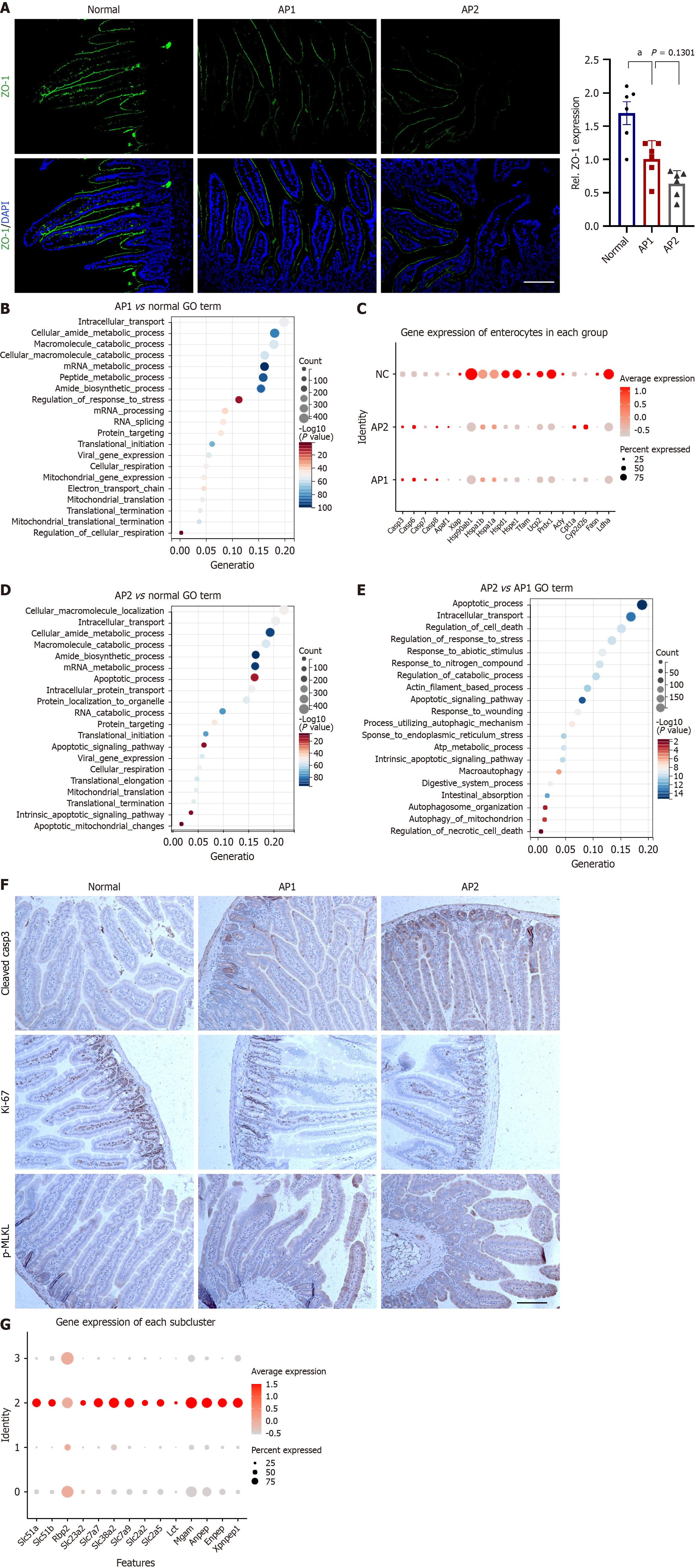Copyright
©The Author(s) 2025.
World J Gastroenterol. Mar 28, 2025; 31(12): 103094
Published online Mar 28, 2025. doi: 10.3748/wjg.v31.i12.103094
Published online Mar 28, 2025. doi: 10.3748/wjg.v31.i12.103094
Figure 3 Enterocytes exhibit increased programmed cell death while maintaining function in the early stages of acute pancreatitis.
A: Protein expression of ZO-1 in the AP1, AP, and normal small intestine; B: Representative enriched gene ontology (GO) terms for differentially expressed genes (DEGs) in enterocytes from the AP1 and normal groups on the basis of scRNA-seq data; C: Selected dysregulated genes associated with cell stress, mitochondrial function, and catabolism (P < 0.05). "Percent expressed" indicates the percentage of cells among groups, whereas "average expression" reflects changes in mean expression; D: Representative enriched GO terms for DEGs in enterocytes from the AP2 and normal groups on the basis of scRNA-seq data; E: Representative enriched GO terms for DEGs in enterocytes from the AP2 and AP1 groups on the basis of scRNA-seq data; F: Protein expression of cleaved caspase-3, Ki-67, and p-MLKL in the AP1, AP2, and normal groups in the small intestine; G: Selected DEGs associated with SLC family genes, nutrient digestion and absorption, and organic acid metabolism in enterocyte subcluster 2 (P < 0.05). "Percent expressed" indicates the percentage of cells among subclusters in enterocytes, whereas "average expression" reflects changes in mean expression. GO: Gene ontology. aP < 0.001.
- Citation: Wei ZX, Jiang SH, Qi XY, Cheng YM, Liu Q, Hou XY, He J. scRNA-seq of the intestine reveals the key role of mast cells in early gut dysfunction associated with acute pancreatitis. World J Gastroenterol 2025; 31(12): 103094
- URL: https://www.wjgnet.com/1007-9327/full/v31/i12/103094.htm
- DOI: https://dx.doi.org/10.3748/wjg.v31.i12.103094









